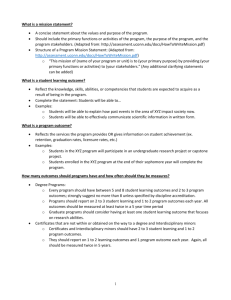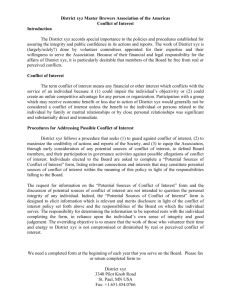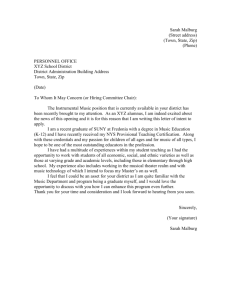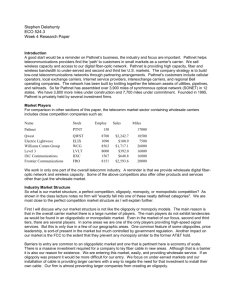XYZ Insurance Agency BUSINESS PLAN 2012
advertisement
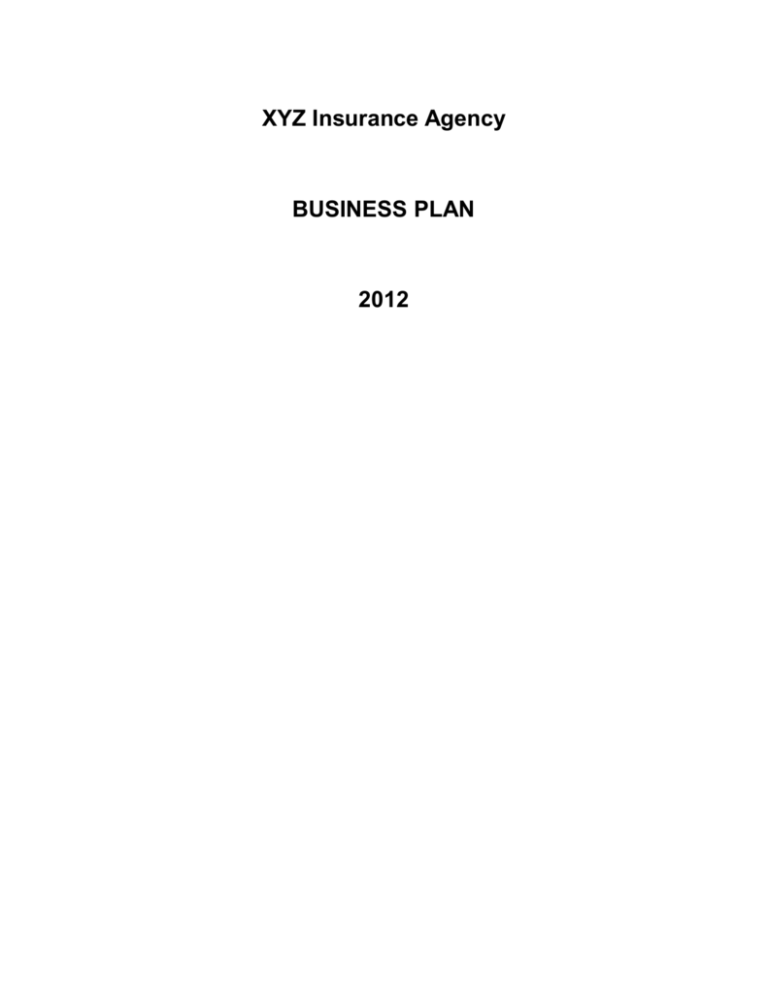
XYZ Insurance Agency BUSINESS PLAN 2012 SITUATION ANALYSIS EXTERNAL The environment we are in today is marked by consumer sophistication, rapid technological change, deregulation by governmental authorities, a consolidation of suppliers & competitors and a demand for quality employees that out-strips supply. The consumer’s expectation of service has increased while the zone of tolerance for unsatisfactory service has shrunk. A greater variety of distribution channels available to the consumer has reduced switching costs. Deregulation has ushered in new competitors with tremendous resources. INTERNAL Our response to these external factors has been to carefully define our client, balance our supplier composition and flatten our organizational structure. Client Definition Consistent with our vision and mission, XYZ is organized around three client groups, in recognition of varying purchasing mentalities but related by a common appreciation for a consultative relationship with XYZ. Our mission statement contemplates the need to take a holistic approach to risk management for our clients whom we divide into the following three client units: Personal Lines Families with a history of stability in work, residence & credit. Small Business Business with 1 to 25 employees whose management is focused primarily on the day to day functions of the organization. Little or no administrative slack. In need of standard, broad coverage policies with easy payment terms and limited evaluation attention needed from management for Risk management functions. Large Accounts More complex organizations with 25 to 500 employees. More vulnerable to the competition and in need of more customized, sophisticated solutions. The current book of business looks like this: Total Premium Total Commission Personal Lines Unit $3,000,000 $360,000 Small Business Unit $4,000,000 $333,000 Large Account Unit $20,000,000 1,800,000 Number of accounts Ave rev per account Policies per account Retention 2,000 $180 1.35 85% 800 $416 1.64 90% 400 $4,500 3.92 92% Problems & Opportunities Our relatively low average account size and policies per account has a negative impact on operational cost structure. Furthermore, our clients are concentrated mostly in the DFW metroplex. This makes our loss ratios particularly vulnerable to catastrophe losses. The recent strategy to divide our commercial book into a small business unit and a large account unit has helped position us to focus on larger accounts. Our plan objectives for this year must include additional strategies to address limitations in client size and geographic spread. Our agency marketing objectives for this year are designed to improve these factors. Carrier Management XYZ has taken a proactive approach to carrier management. We have concentrated our representation among a limited mix of national, regional and specialty sources of products and services allowing us to maximize compensation agreements and resource allocation. We nourish these relationships through a formal carrier management program. We have aligned our suppliers with our client groups: Personal Lines Unit: Primary markets are Safeco, Chubb and Progressive. Safeco’s focus is on stable, middle income families. Chubb targets high wealth individuals and families. Progressive allows us to fill the gap when necessary to cover the life cycle of our client base. These carriers are supplemented by a limited number of financially stable life, health and disability carriers. Small Business Unit: Primary markets are Hartford, Travelers and Safeco/American States. Emphasis here is on the ability to provide technology enhanced 24/7 service and products with coverage breadth. Commercial Lines Unit: Primary markets are OCG, Hartford, CNA and Aetna. A wider degree of supplemental markets are maintained to afford us the customization tools this client group demands. The following table highlights our lead carrier distribution: PL Unit OCG Hartford Travelers Safeco/AS CNA 1,200,000 Small Bus Unit 85,000 500,000 550,000 100,000 200,000 Large Acct Unit 2,500,000 1,500,000 500,000 250,000 900,000 Aetna 750,000 8,000,000 Problems & Opportunities As our competitors consolidate and increase the concentration of business with suppliers, their relative power to influence will rise and present a threat. Our ambitious marketing objectives recognize the need for us to increase volume with selected carriers. Organizational Structure XYZ’s primary source of competitive advantage derives from the superior motivation of our staff and effective operational routines that have arisen from a team culture. Because these attributes are embedded in our organizational structure, we believe our competitive advantage is not easily replicated by competitors. In keeping with our philosophy that the people closest to the client are in the best position to plan and implement product and service delivery in a way that maximizes client experience, we have flattened our organization ( Appendix) into work teams. The teams meet regularly to discuss marketing and operational strategy. Each team is composed of a team leader whose role it is to facilitate the meeting. This position rotates among the members quarterly. Each team also has a coordinator whose role it is to monitor group process and to link issues across multiple teams when the situation dictates. A flatter organization has facilitated organizational learning, improved employee morale and made our company more attractive to prospective employees. Our company’s purpose and values have been aligned with employee values to enhance motivation. Production and expense control are incentivized through an agency wide gain sharing program based on revenue growth and cost control. BUSINESS PLAN GOALS Given these external and internal factors, XYZ business plan has the following organizational objectives: Increase revenue per account Generate $5,000,000 in annual revenues by 2015. The following marketing initiatives have been adopted by each client business unit for 2012: PERSONAL LINES SALES & MARKETING PLAN FOR 2005 Objective: Produce $350,000 in gross PL commissions by 12/31/12. Strategies to Accomplish Objective: Implement aggressive rounding program focusing on life, health, disability, long-term care and retirement needs Improve cross-sell routines to commercial client units Take advantage of workplace marketing opportunities Implement Referral Program Implement Senior marketing program Develop VIP brand Increase retention to 90% SMALL BUSINESS SALES & MARKETING PLAN FOR 2012 Objective: Produce $100,000 in net new revenues. Strategies to Accomplish Objective: Conduct 4 niche marketing campaigns Establish formal client contact program targeting top 20% of accounts Position agency as advisor Identify gaps & recommend solutions Increase limits and values Create EB & business continuation opportunities for producers Develop & implement exit strategy for unprofitable accounts Increase retention to 90% on accounts not marked for exit. . LARGE COMMERCIAL SALES & MARKETING PLAN FOR 2012 Objective: New business revenue goal $700,000 Strategies to Accomplish Objective: Develop & implement Producer sales plans in consultation with professional sales coach (Appendix) Detailed, targeted & accountable Emphasis on larger account size Focused on relationship marketing Offer value added services: Cobra service OSHA & Employment Law Compliance Develop competency in team selling and multi-media presentations. RESOURCE INITIATIVES FOR 2012 Package agency story Install Contact Management Program Institute Telemarketing research function Conduct seminars and other client/prospect seminars Publish newsletter and trade articles in producer niches Conduct niche mail campaigns Participate in trade events as scheduled by producers Appendix Resumes on Agency Leaders Carrier Chart Organizational Chart Producer Sales Plans Budgets
![[Date] [Policyholder Name] [Policyholder address] Re: [XYZ](http://s3.studylib.net/store/data/008312458_1-644e3a63f85b8da415bf082babcf4126-300x300.png)
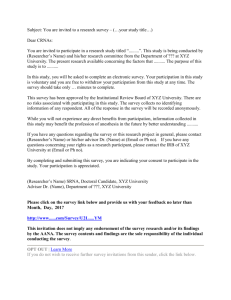
![waiver of all claims [form]](http://s3.studylib.net/store/data/006992518_1-099c1f53a611c6c0d62e397e1d1c660f-300x300.png)

